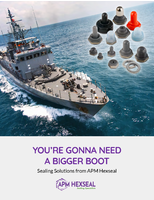Software secures and manages e-businesses.
Press Release Summary:
Information Management System v9, with v9 Database Manager, facilitates e-business enablement, growth, availability, and systems management. It provides scalability through virtualization in assuring flexibility for growth and expansion in homogeneous environment. Integration and open access is provided with broadened application development/execution tools using Java and XML. Expanded autonomic commands and interfaces are accessible across environments.
Original Press Release:
IBM Information Management System V9 Extends the Reach of Existing Applications and Data
At a glance
IBM IMS V9 enhancements include:
IMS V9 Database Manager
Integration and Open Access with broadened data access with Java(TM) and XML, and enabling store of XML data in IMS databases
Manageability with expanded autonomic user-friendly commands and interfaces accessible across environments, easier installation and system generation, and enhanced security and serviceability
Scalability with improved availability and recovery with fully integrated Online Reorganization of HALDB and Database Recovery Control (DBRC) enhancements, and improved performance and capacity in Fast Path and Database utilities
IMS V9 Transaction Manager
Integration and Open Access with broadened application development/execution tools using Java and XML, and with VTAM® Multinode Persistent Sessions replacing Uservar for XRF
Manageability eased with extended autonomic network switch-over capability, enhanced security and serviceability, and easier installation and system generation
Scalability with improved system availability, performance, and capacity in workload balancing
Overview
IBM's Information Management System (IMS(TM)) helps you with e-business enablement, growth, availability, and systems management that the newer environments and cost measures require. The enhancements in IMS Database Manager (IMS DB) and IMS Transaction Manager (IMS TM) with V9 help you:
Transform the way you do business with integrated information
Build e-business applications that tolerate the rigors of doing business on the Internet
Run a scalable, available, safe, and easily managed environment
Leverage everything you learn in the process and mine all your information to make better decisions
IMS V9 helps in the evolution to on demand e-business computing through integration, openness, autonomic computing, and virtualization, providing:
Integration with other IBM products and with other products and platforms within the industry, supporting IBM's commitment to open standards that benefit you, and developing supporting tools for application development and connectivity.
Manageability through staging users to Autonomic Computing, easing use, eliminating/reducing outages, and minimizing the education curve for users using IMS.
Scalability through virtualization in assuring flexibility for growth and expansion in a homogeneous environment while utilizing many heterogeneous data and application sources and new hardware and software facilities to optimize performance, capacity, availability, and recovery. This includes new levels of enhanced availability for IMS High Availability Large Databases (HALDB), introduced in V7, with fully integrated Online Reorganization support that provides concurrent online update and availability of data.
To learn more about IBM's IMS products and tools, visit the Web at: www.ibm.com/ims
Key prerequisites
IMS Transaction and Database servers
Planned availability date
January 2, 2004, is the IMS V9 (5655-J38) Quality Partnership Program (QPP) start date. IBM plans to ship IMS V9 to customers already selected as participants in the QPP process. Refer to Marketing Announcement 392-061, dated March 17, 1992, for information regarding the QPP process.
General availability of IMS V9 will be announced at a later date.
Description
Integration and open access with new application development and connectivity
Java and XML enhancements
XML data storage and retrieval enablement provides support for storage and retrieval of XML documents into and from IMS databases. The XML enablement extends the IMS Java JDBC interface to allow the composition of XML documents from pre-existing non-XML IMS data. In addition, IMS can store XML documents in IMS databases, either wholly intact or by decomposing them into standard IMS segments and fields, that can be used by existing or new non-XML enabled applications.
DL/I Model Utility enhancements generate XML Schemas from IMS Database Definitions (DBDs) and Program Status Blocks (PSBs). This utility supports XML storage and retrieval at runtime. This enhancement automates schema generation to accelerate IMS application development.
IMS Java Remote Database Services enables distributed database access to IMS DB data from an EJB running on a distributed J2EE application server without requiring additional z/OS® application programming.
IMS-DB2® interoperability from within a Java Dependent Region. This item is also provided through the IMS V8 service process.
SQL enhancements for new SQL keywords and aggregate functions (SUM, AVG, MIN, MAX, COUNT, ORDER BY, GROUP BY, AS). This item is also provided through the IMS V8 service process.
JDBC 2.0 support, including the ability to obtain scroll insensitive result sets. This item is also provided through the IMS V8 service process.
Symbolic Checkpoint/Restart support is provided for the Java Batch Region.
COBOL XML support through WSED 5.0-generated XML converters to allow IMS COBOL applications to parse and transform XML documents. You can now send and receive XML documents directly to and from IMS COBOL applications running inside IMS regions.
Message Format Services (MFS) Web Services support, through WebSphere® enables you to publish your existing MFS-based IMS transactions on the Internet as Web services, and connect to IMS via SOAP and EJB bindings.
OTMA security, serviceability, and performance enhancements
OTMA Clients can set the ACEE Aging Value for userid in the OTMA message prefix without requiring the client to reconnect to OTMA.
OTMT Table Trace entries for OTMA User exits (DFSYPRX0, DFSYPRX0, and DFSYDRU0) are standardized so you can view the return code set by the exit routines. The OTMA User Exit routine (DFSYPRX0) can set the OTMA destination TPIPE name.
OTMA Translation Input and Output Set/Change can be done with the z2 field of the IMS application data.
Security Enhancements for RACF® (or equivalent products) enable migration from SMU Security and consolidating implementation of all security under RACF.
Greater than 255 Transaction classes increases the number of named scheduling classes of transactions from 255 to 999 to enhance tailorization of system scheduling and enhance usability.
VTAM Multi-node Persistent Sessions (MNPS) enhancement provides a replacement for USERVAR for IMS Extended Recovery Facility (XRF). IMS XRF provides hot standby capability for IMS but is no longer dependent on the 3745 hardware controllers.
Option added to allow Logical Unit (LU) Type 3 device to logon as an Extended Terminal Option (ETO) SLU1 or 3270P device to make IMS available for those devices.




